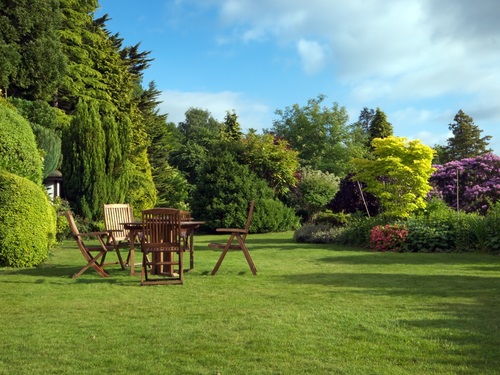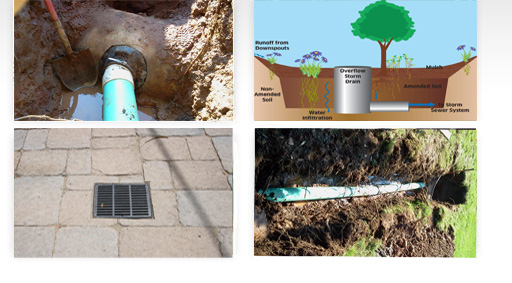Posts Tagged soil
How to Transplant Shrubs in Summer
The best times of year to transplant trees and shrubs are spring and fall; however, certain situations may make it necessary to move your plants outside of those seasons. For example, you may want to take your shrubs with you if you are moving or you may have to move the plant because of the weather.

If you find it necessary to move a plant during the warmest part of the year, you will need to take certain steps to ensure its health. Here are some tips on how to move shrubs in the summer without harming them:
- Choose the Right Location
Transplantation represents a dramatic change and a plant will have to adapt to its new environment slowly in order to survive. This means that you will have to keep factors like sunlight, soil drainage and soil pH in mind when choosing a new location. - Dig an Appropriate Hole
You will need to dig a hole that is approximately twice as large as the shrub’s root system. The additional space allows the roots to grow into the new site comfortably. - Carefully Remove the Shrub
Work carefully to avoid damaging the root system when uprooting shrubs. You will want to take as much of it as you can. You will also want to move some of the soil from the old location to the new one. You can place larger shrubs on a tarp and drag them to the new location along with some of the soil. - Add Adequate Water to the New Hole
You will want to wet the hole thoroughly before placing the shrub into it but avoid oversaturating it as this can cause the shrub’s roots to rot. - Place Shrub in the New Hole
Along with the shrub, place some of the soil from the old location into the hole as well as some potting soil. Pat the soil down around the base to ensure that the shrub stays upright. You can add watering stakes to the ground so that the shrub can water at root level but this is not essential. Be careful to avoid damage to the roots when installing the watering stakes.
The quality of your landscaping plays a major role in your ability to enjoy your yard and in your property value. If you need help with moving shrubs or with any other aspect of landscape maintenance, contact us today. Our experienced landscaping crews know how to move your shrubs and trees quickly and without damaging them.
What’s Growing On?
Flowers always make people better, happier, and more helpful; they are sunshine, food and medicine for the soul. ~ Luther Burbank
Around this time of year I start to get spring fever, that urge to go outside and dig around and plant something. Even if you naturally don’t have a green thumb, flower gardening allows you to use your artistic playful side, being outside in nature soothes your soul, and a beautiful flower garden increases the curb appeal of your home. One of the first things a flower gardener learns is that there is not one date when it is best to plant all flowers.
This group of exotic and tropical summer bloomers can be planted right now and all through April in most of the country; planting times for colder regions of the North are typically from April to June, depending on the bulb.

Cannas are a personal favorite for their showy, tropical-like flowers and vibrantly-colored or variegated banana-like leaves. Dahlias offer numerous flower types from dazzling daisies, to showy pom poms, to show-stopping colorful blooms. Other note-worthy spring-planted bulbs include gladiolus, windflower (Anemone coronaria), pineapple lily (Eucomis), freesia, summer hyacinth (Galtonia), begonia, red hot poker (Kniphofia), Asiatic and Oriental lilies (Lilium), and Aztec lily (Sprekelia). 
So start by finding an empty spot in your yard that you see frequently that could use some color. If you don’t have an open bed, remove a patch of lawn in front of shrubs. Measure the size and note what time of day and how long the sun shines on that spot. Consider the following when designing your garden: hardiness, color, fragrance, height, time of bloom and size of plant. Do you want to attract hummingbirds, butterflies, or song birds? Or are you trying to create a work of beauty just for you? Next, visit your favorite full service nursery. They will help you pick out the right flowers for that spot. And be sure to ask about fertilizer, weed preventer and mulch.
Here are three easy ways to start planting your summer bulbs:
- Start with bulbs that are plump, firm and feel heavy for their size. Prep the soil by working a complete fertilizer into the entire bed or bottom of planting holes.
- Arrange the bulbs in groups or random clusters, then plant them at the depth recommended on the package with the pointed side or sprouting side facing up.
- Cover the bulbs with soil mixed with compost and keep the soil moist to slightly moist from planting until the foliage of the mature plant dies back.
One of the biggest things about gardening is the upkeep, depending on the plants and flowers you choose this can require little maintenance or high maintenance. Be realistic about your daily scheduled and how much effort you are willing to put in weekly to maintain your gardens.
Work all day? Busy with kids? Then opt for low maintenance plants that need very little maintenance or call DK Landscaping to keep your yard looking beautiful all year long! (707) 280-3632.
Rainscaping Your Landscape
With the rainy season still in store for us in Northern California, it is vital that your landscaping have proper water drainage built in to the design. Without proper drainage, your home and landscape can suffer greatly. Not only can it destroy your plants, yard and your neighbors’ properties, but can lead to serious structural problems for your home and hardscapes, such as cracked housing foundations, water leaks, and flooded sump pumps.

To avoid the nightmare of rather expensive structural problems and flooding, DK Landscaping provides some solutions to poor drainage:
- Proper Grading: Grading (if surface drainage is possible) is often the most inexpensive and most effective solution to correcting an area with poor drainage.
- French Drains: A French drain is basically a ditch lined with rocks or gravel that helps drain water away from an area. French drain works on the principle of gravity, being slightly sloped down from the area to be drained to the area where one wishes to redirect the water. Excess ground and surface water percolates into the French drain and is directed away.
- Catch Basins: Catch basins are simply a reservoir designed to trap debris so that it cannot enter the drainage pipes. Anytime your source of water is above ground, a catch basin can collect the water so that it can be piped away underground. Basins are used primarily when grading is either not possible or when it would create an undesired/unusable space.
- Sump Pumps: Commonly used back East where most homes have basements. Sump pumps are sometimes the only way to remove unwanted water from a location. Many homes have situations where there is no way to drain storm water from their property. If you don’t have a slope away from your property or there is a lower area or sunken area, a sump may be the solution to get the water out.
The primary goal of proper drainage is to remove the water and put it where it belongs: on the street! So whether you are doing it yourself or hiring a professional landscape company, you want to make sure the proper installation methods are being used. If you don’t know what the above bullet points mean, you probably want to hire professionals… this will not only save you a headache, but money in the long run!
For more information and a free consultation on your drainage system, please contact Kathy Lee at DK Landscaping. Kathy is our QWEL (Qualified Water Efficient Landscaper) Certified Irrigation Expert. We are also a certified WaterSense Partner. QWEL and WaterSense are certified by the EPA.
Protecting Your Landscape From Frost Bite
The temperatures in Northern California are beginning to drop which means winter will be before us, before we know it. Night time temperatures that get down to freezing and below will damage some trees and plants if you don’t take precautions against frost. These low temperatures can begin late November and continue through February and beyond.
DK Landscaping helps you prepare your landscape and provides tips to protect your delicate plants from frost bite.

WINTERIZE
Fall is prime time to clean up your landscaping and remove the dead landscaping before it gets too cold. Removing dead plants can also stop the growth and spread of fungi that could infect your plants’ new growth in the spring.
PLANT
Planting trees and shrubs in the fall is a an optimal time before the first frost arrives and best time to take advantage on some great end of the season deals. Planting in the fall gives roots plenty of time to become established before the next growing season begins. Not only will you get to enjoy the changing leaves for a brief time, you will also put less stress on your young trees because of the cooler weather and rain conditions fall offers.
MULCH
Mulching can be a great first step in preparing for winter’s frost. If you are unfamiliar with mulching, check out our previous blog post called Mulch About Fall. There are many benefits to mulching your lawn and plants, especially before winter. Mulching in the fall can help protect your plant’s roots as well as help them retain moisture during the cold, dry winter.
Just a few preparations for winter can guarantee that your landscaping will come back fresher than ever in the spring.
For more information on the care of your landscape, please contact David or Kathy Lee from DK Landscaping (707) 280-3632.
Mulch About Fall

Did you know that mulching in the fall is just as important as it is in the spring and summer months? We mulch in the spring and summer months to suppress weeds, retain moisture and feed and warm the soil. However, when the temperatures begin to drop and the ground freezes, root systems can be exposed. The primary reason for winter mulching is to protect our plants from the harsh conditions of winter freezes, thaws and winds. Mulch acts as an insulator to balance the temperature creating a warm, heavy blanket of protection.
Neglecting to mulch in the fall can be damaging to your plants in the spring season. And the cost of mulching is nothing compared to the cost of replacing some of your favorite trees and shrubs. It also adds a beautiful aesthetic to your landscape in the winter months.
Using fall leaves as organic mulch is a great benefit to your landscape. They will break down over the course of the wintertime and create a layer of nutrients for your plants to draw from. Adding a layer of leaves over your perennials will help regulate soil temperature of the wintertime, as well as give new shoots a protective blanket as they enter the world in the spring.
DK Landscaping offers mulching installation in Sonoma County. Contact us for more information on the benefits of fall mulching (707) 280-3632.





